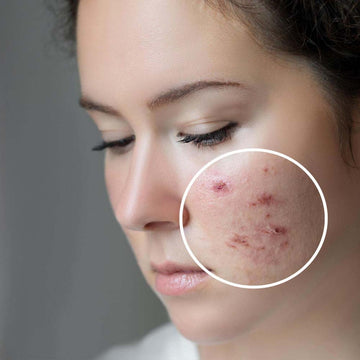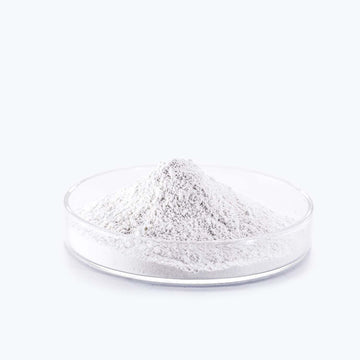Embarking on the journey to understand acne scars is like exploring uncharted territory – it's a common quest for many, and here's your compass. Let's dive into the intricacies of acne scars, uncovering what causes them and exploring effective treatments for a smoother, more radiant complexion.
1.Decoding Acne Scars: A Closer Look
Acne scars are like the remnants of a battlefield, telling the story of past acne lesions and the skin's healing process. These scars come in various forms – some are like tiny craters, others are raised, and some leave behind darker pigmentation. To tackle them effectively, let's first understand the different types.
The Culprits Behind Acne Scars
a.Inflammation Takes Center Stage
Imagine acne as a theatrical performance, and inflammation is the lead actor. When the skin's response to acne becomes inflammatory, scars may take the stage during the healing process.
b.Genetics Plays a Role
In this genetic play, family history is the script. If your relatives have dealt with severe scarring, you might find yourself cast in a similar role.
c.Handle with Care: Skin Manipulation
Think of your skin as delicate fabric – picking, squeezing, or popping acne is like tugging at that fabric. It disrupts the natural healing dance, leaving scars as a lingering encore.
2.Spotlight on Acne Scar Varieties
a.Ice Pick Scars: The Punctures
Meet ice pick scars – the divas of acne scars. These are deep, narrow pits that resemble tiny puncture marks, adding character to your skin's narrative.
b.Boxcar Scars: Defined Depressions
Think of boxcar scars as the storytellers with well-defined edges. They create broader depressions on the skin, reminiscent of chickenpox scars.
c.Rolling Scars: The Wave Effect
Rolling scars bring texture to the story, creating a gentle wave on the skin. These scars contribute to the novel of uneven skin texture.
3.Solutions for the Acne Scars Saga
a.Laser Magic
Imagine lasers as the wizards of skincare. They cast spells to stimulate collagen production, magically reducing the appearance of scars. Fractional laser therapy, our magical wand, works wonders for resurfacing damaged skin.
b.Chemical Peels: The Rejuvenators
Chemical peels are like the skincare alchemists, using a special potion to exfoliate the skin's outer layer. This mystical process encourages new, smoother skin, minimizing the visibility of scars.
c.Microneedling: A Tale of Tiny Needles
Picture microneedling as a storytelling journey. Tiny needles create micro-injuries, triggering the skin's healing saga. This epic stimulates collagen production, rewriting the story of your skin's texture.
d.Dermal Fillers: The Temporary Fixers
Dermal fillers are like the makeup artists of skincare. They fill in depressed scars, providing a temporary plumping effect. It's the beauty secret for shallower scars.
4.Preventing the Next Chapter of Acne Scars
a.Managing Acne: The Early Chapters
To avoid future scars, manage acne like a prologue. Consult with a dermatologist to set up a skincare routine tailored to your skin's unique story.
b.Hands Off! A Lesson in Skin Respect
Resist the temptation to play director with your skin. Avoid picking or squeezing acne lesions – let your skin's story unfold naturally. Gentle skincare practices contribute to a healthier storyline.
5.In Conclusion: Your Skin's Epic Tale
Acne scars may seem like a plot twist, but the story doesn't end there. Armed with knowledge about causes and treatments, you hold the pen to your skin's narrative. Consult with a dermatologist to determine the most suitable plot twist for your unique skin concerns.
1: What causes acne scars?
Acne scars result from the skin's healing process after inflammatory acne. Factors like genetics and skin manipulation also contribute to their formation.
2: Are all acne scars the same?
No, acne scars come in various types, including ice pick scars, boxcar scars, and rolling scars, each with its unique characteristics.
3: Can genetics influence the likelihood of acne scars?
Yes, a family history of severe scarring can increase the likelihood of developing acne scars.
4: How can I prevent acne scars?
Preventing acne scars involves managing acne early on, adopting a gentle skincare routine, and avoiding the temptation to manipulate or pick at acne lesions.
5: What treatments are effective for acne scars?
Effective treatments include laser therapy, chemical peels, microneedling, and dermal fillers, each addressing specific types of acne scars.
6: Are dermal fillers a permanent solution for acne scars?
No, dermal fillers provide a temporary plumping effect and are considered a temporary solution for shallower acne scars.
7: Can acne scars be completely eliminated?
While complete elimination may not always be possible, various treatments can significantly reduce the visibility of acne scars, promoting smoother skin.
8: Is microneedling painful?
Microneedling is generally well-tolerated, with minimal discomfort. Topical numbing agents are often applied to enhance comfort during the procedure.
9: How long does it take to see results from acne scar treatments?
Results vary depending on the chosen treatment. Some may show improvement after the first session, while others may require multiple sessions for noticeable results.
10: Can a skincare routine help prevent the formation of acne scars?
Yes, adopting a skincare routine tailored to your skin type and consulting with a dermatologist for personalized advice can help manage acne and reduce the risk of scarring.





